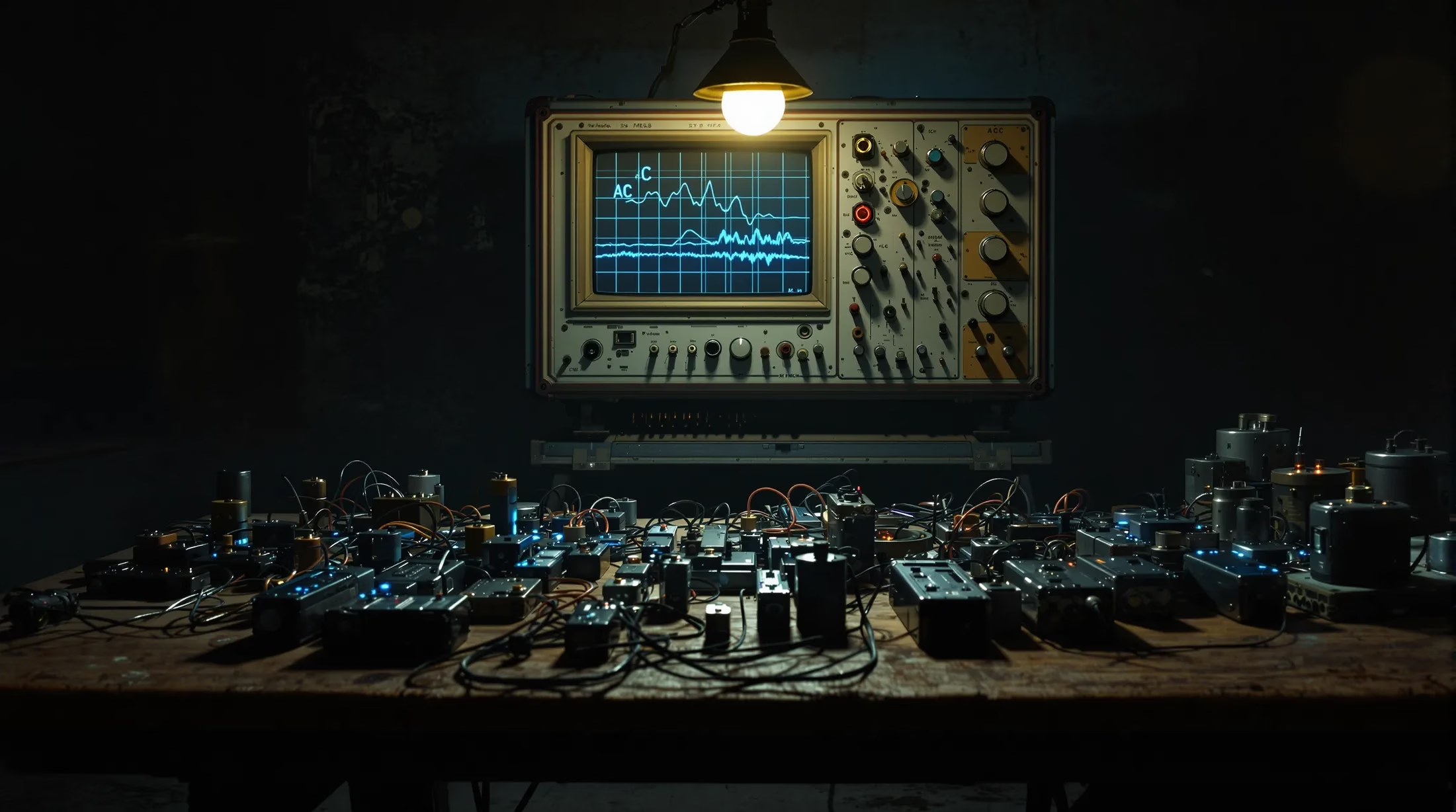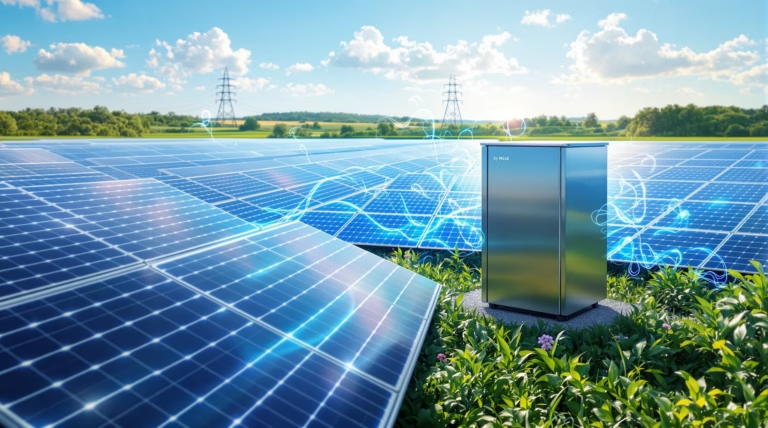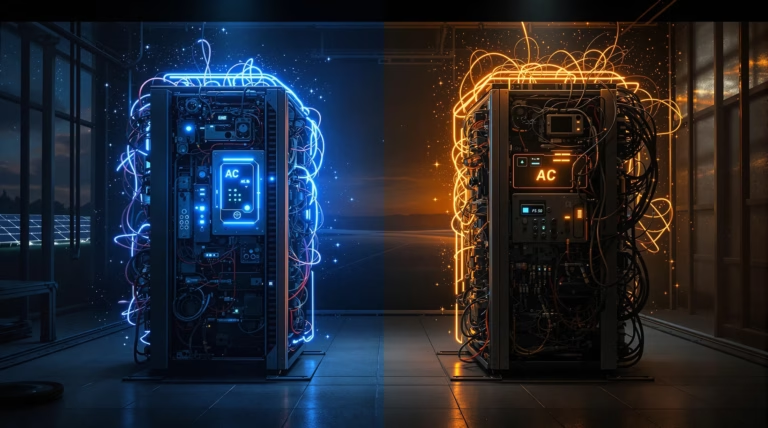Battery AC or DC: Understanding the Differences
Understanding the distinction between AC and DC power is crucial for anyone using electronic devices or working with batteries. Let’s explore how these different types of electrical currents work and their relationship with battery technology.
The fundamental distinction between Alternating Current (AC) and Direct Current (DC) plays a vital role in electrical power systems, particularly concerning batteries. All batteries operate exclusively on Direct Current electricity, storing energy that flows in one consistent direction, regardless of their voltage capacity – from small watch batteries to large automotive units.
While our homes primarily use AC power from the electrical grid, most portable devices rely on DC power from batteries. This distinction is essential for understanding how our electronic devices function in our increasingly battery-dependent world.
What is Alternating Current (AC)?
Alternating Current represents an electrical flow that periodically changes direction. Unlike DC, AC maintains a variable voltage level in a sine wave pattern. Here are the key characteristics of AC power:
- Cycles 60 times per second (60Hz) in the United States
- Operates at 50Hz in many other countries
- Experiences minimal energy loss during long-distance transmission
- Easily transforms between different voltage levels
- Powers most household appliances directly
What is Direct Current (DC)?
Direct Current provides a steady, unidirectional flow of electrical charge at a constant voltage level. This simpler electrical pattern makes it ideal for specific applications:
- Powers portable electronic devices (smartphones, laptops, cameras)
- Generated naturally by solar panels
- Essential for sensitive electronics requiring stable voltage
- Used in battery storage systems
- Provides consistent power output
How Batteries Work with AC and DC
Batteries function exclusively as DC devices, serving as the foundation of portable power in modern technology. They store electrical energy chemically and release it as a steady, unidirectional electron flow. This characteristic remains constant across all battery types and sizes.
Batteries and Direct Current (DC)
The internal workings of batteries inherently produce DC electricity through chemical reactions. These reactions create an electron surplus at the negative terminal and a deficit at the positive terminal, resulting in a consistent current flow when connected to a circuit.
Converting AC to DC for Battery Use
The process of charging batteries from AC power sources involves sophisticated conversion systems:
- Rectifiers transform AC’s bidirectional flow into DC
- Transformers adjust voltage levels for safe charging
- Filtering capacitors smooth voltage fluctuations
- Voltage regulators ensure precise power output
- Modern chargers incorporate feedback circuits for efficient conversion
| Feature | AC Power | DC Power |
|---|---|---|
| Current Flow | Alternating direction | Single direction |
| Voltage Level | Variable | Constant |
| Primary Use | Power grid distribution | Battery-powered devices |
| Energy Storage | Not directly storable | Easily stored in batteries |
Applications of AC and DC in Everyday Devices
Both AC and DC power serve distinct yet crucial roles in our electronic ecosystem. While residential electrical systems utilize AC power for its superior long-distance transmission capabilities, many daily devices operate on DC power, typically supplied by batteries. This fundamental division shapes the design and functionality of virtually every powered device we use.
The practical implications of this AC-DC distinction extend beyond technical specifications, influencing energy efficiency, device portability, and the integration of renewable energy systems. Most portable electronics rely on DC power, while stationary appliances connect directly to the AC grid, creating a balanced ecosystem of power distribution and consumption.
Common Devices Using DC Power
- Portable Electronics – smartphones, laptops, tablets, digital cameras
- Personal Audio Devices – wireless headphones, portable speakers
- Transportation Tools – electric vehicles, drones, electric scooters
- Medical Devices – pacemakers, hearing aids
- Home Entertainment – gaming consoles, desktop computers (internal components)
Many devices that plug into wall outlets actually utilize DC power internally. These electronics contain power supplies that convert AC from the wall outlet to DC for their internal components. This widespread reliance on DC power demonstrates its fundamental role in modern electronics.
Household Appliances and AC Power
| Appliance Type | Power Type | Characteristics |
|---|---|---|
| Refrigerators | AC Direct | High power demand, continuous operation |
| Washing Machines | AC Direct | Motor-driven, variable power needs |
| Air Conditioners | AC Direct | Heavy power consumption, compressor-based |
| Conventional Ovens | AC Direct | High-heat generation, precise power control |
Major household appliances operate directly on AC power, leveraging its efficient power delivery for high-demand operations. These devices contain motors and heating elements specifically designed for AC’s oscillating nature. While battery technology advances, the power requirements of these appliances typically preclude battery operation, though emerging technologies are beginning to challenge this limitation.
Solar Generators and Their Use of DC Power
Solar generators represent a specialized category of portable power that harnesses renewable energy through photovoltaic technology. These systems combine solar panels, which naturally generate DC electricity when exposed to sunlight, with battery storage units. The direct current produced by solar panels flows directly into the battery storage system without requiring initial conversion, creating an elegant DC-to-DC charging solution powered by the sun.
- Silent operation with zero emissions
- Self-sufficient power generation
- Direct DC-to-DC charging efficiency
- Integrated battery storage system
- Built-in inverter for AC conversion
The true innovation of solar generators lies in their complete energy ecosystem. They capture DC power from solar panels, store it efficiently in battery banks, and then convert it to AC as needed through built-in inverters. This makes them remarkably self-sufficient power sources for off-grid applications like camping, RV travel, remote job sites, or emergency backup. Their increasing popularity reflects growing consumer interest in renewable energy solutions that offer independence from the traditional power grid.
Conclusion: Understanding the Importance of AC and DC
Understanding the distinction between AC and DC power is crucial for making informed decisions about energy storage solutions and electrical systems. Batteries are fundamentally DC devices, yet they must interface with our predominantly AC-powered world. This knowledge empowers consumers to select appropriate components—such as inverters and converters—ensuring compatibility and maximizing efficiency in their electrical setups.
| System Component | Power Type | Key Benefits |
|---|---|---|
| Battery Storage | DC | Efficient energy storage, portable power |
| Solar Panels | DC | Direct charging, renewable energy source |
| Grid Integration | AC | Wide distribution, standard compatibility |
| Inverter Systems | DC to AC | Versatile power delivery, appliance compatibility |
The implications of this knowledge extend beyond technical considerations. When selecting battery systems for home solar installations, backup power solutions, or portable applications, understanding the AC/DC relationship helps optimize both performance and cost. A well-designed system that properly manages the conversion between these two forms of electricity can significantly reduce energy losses and extend battery life. As renewable energy continues to grow in importance, the ability to seamlessly integrate DC-generating solar panels with both battery storage systems and the AC grid becomes increasingly valuable.







